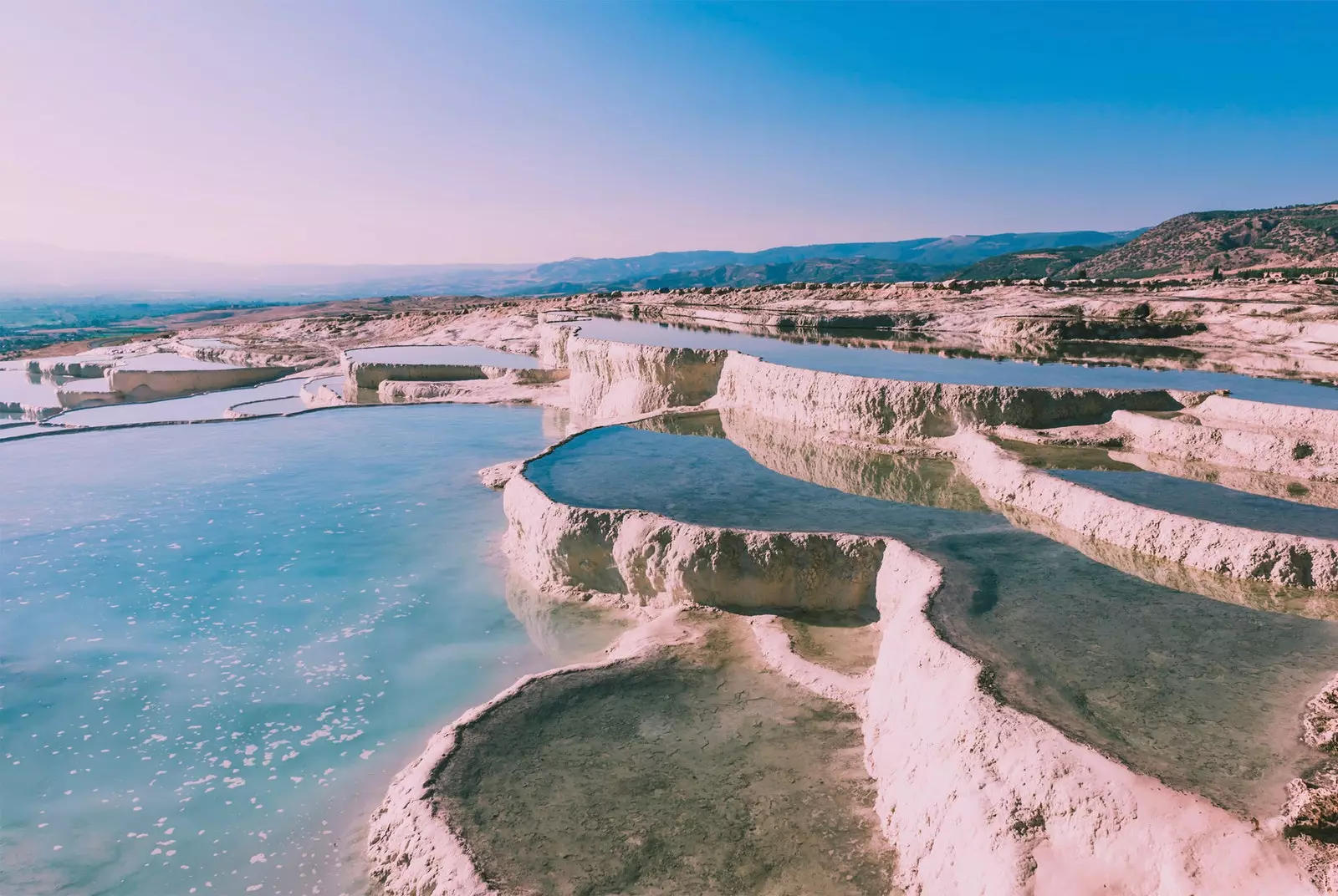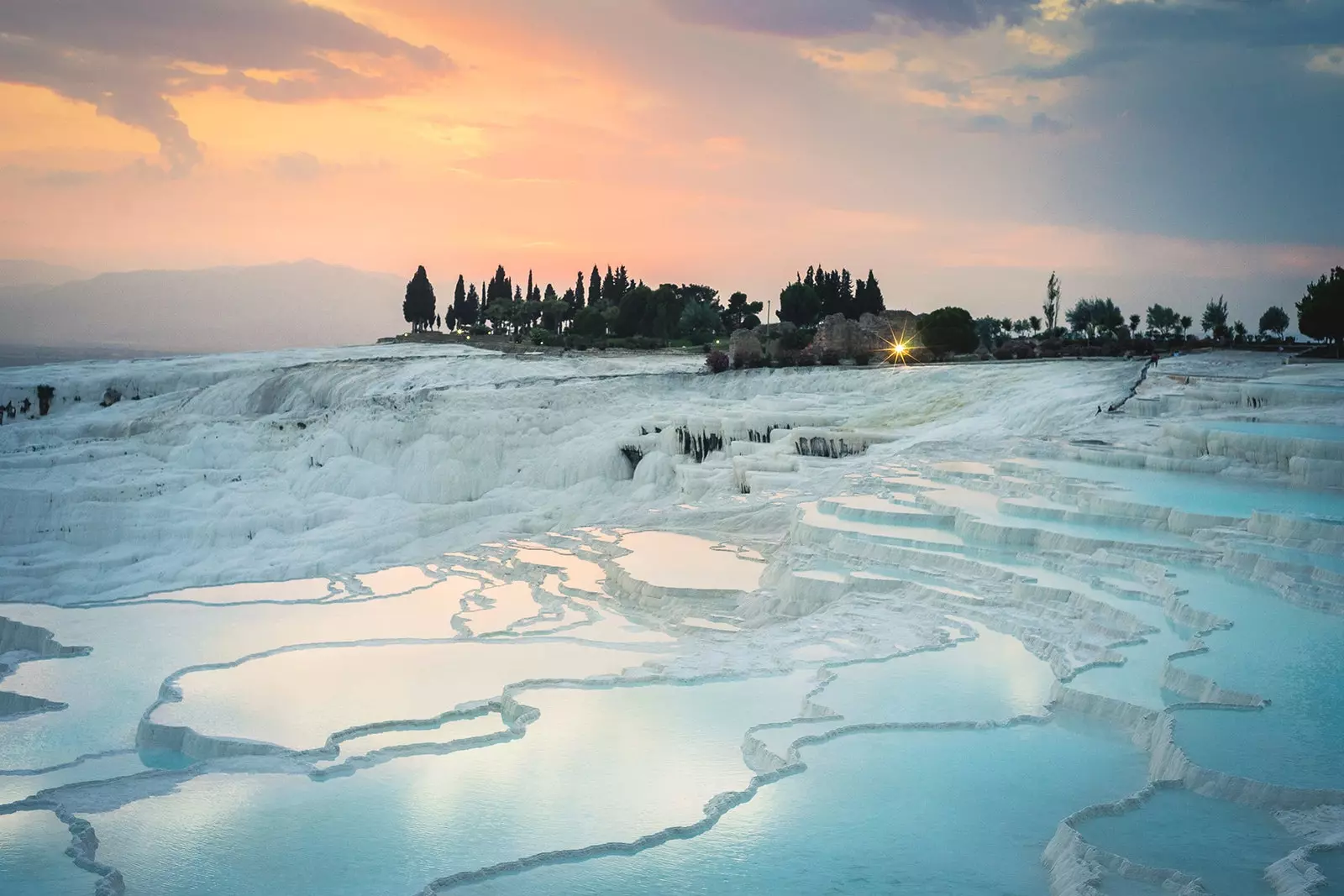
you've never seen anything like it
You may have never heard of Pamukkale, but we are sure that by the time you finish reading this article, you will be looking forward to it. This curious mountain with white frozen waterfall look It is made up of multiple 'pools' of turquoise hot springs that fascinated classical cultures. In fact, the Roman architect Vitruvius already described it with wonder in the 1st century BC, as these flooded terraces were well known for their therapeutic properties at the time. Around them, in fact, the ** sacred city of Hierapolis ** was built, to which numerous Romans came seeking the healing of its waters.
East "cotton castle" -that is the translation of the Turkish word Pamukkale- is located in the Menderes valley, in the province of Denizli (Turkey). Its origin is in the tectonic movements that took place in the river basin, which caused the appearance of numerous hot springs. These waters, with their high content of Crete -the limestone rock from which the chalk is extracted-, bicarbonate and calcium gave rise to the particular whitish color of the natural monument, as well as its shape. So extraordinary is this combination of elements that there is only one other similar in the world : the one that responds to the graphic name of Hierve el agua, in Oaxaca (Mexico).

An unparalleled landscape that improves at sunset
For millennia, the ancient tradition of going to bathe in the area was maintained. However, in the 1990s, it was done without control -even with soaps-, Pamukkale itself was accessed with gasoline vehicles -it was built up to an asphalt ramp-, the waters were used to fill the swimming pools of the hotels that were built just above the formation and they were even poured sewage on site.
Finally, after his 'christening' as World Heritage by Unesco, some order was put into that chaos: the hotels were demolished, the ramp was covered with artificial pools, a canal was built around it to collect the water and prevent it from spilling, the colored areas were allowed to brownish - damaged by spills and misuse - were bleached in the sun and it was avoided to cover them with water to mitigate the problem (which is the reason why many pools remain empty) . Following a set schedule, other areas at the top of the hill are filled with water and open to the public almost all day , allowing bathing in certain areas.
HIERAPOLIS, A MUST VISIT
And it is not a figure of speech: to enter the thermal pools of Pamukkale you will have to pay 80 liras (about nine euros) for a ticket that will also give you access to the ancient ruins of Hierapolis. Around the hot springs, on top of the Pamukkale mountain, the city of Hierapolis was built, which ended up becoming sacred territory for the large number of temples that were built in it.
Today, the archaeological site is also World Heritage , and still has remains of a necropolis, baths, old doors and temples and, above all, a theater that is in a spectacular state of preservation. The view over the ruins is breathtaking, especially under the late afternoon sky.
A SWIM IN HISTORY IN THE 'CLEOPATRA POOL'
To round off the trip, you can also purchase admission to an ancient hot spring pool filled with ancient ruins, where it is said that Cleopatra bathed . We tell you all about this special dip!
